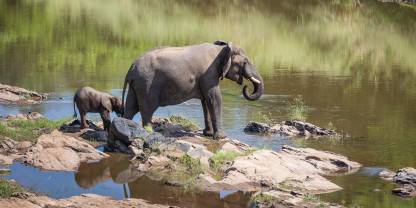Average Expert Rating
Rating Breakdown
Write a User ReviewUndergoing Great Transformation
The rugged, hilly terrain of Nkhotakota is bisected by a network of rivers weaving their way through the dense miombo forests. Although it is Malawi’s oldest wildlife reserve, and one of the country’s largest conservation areas, up until now it has been little developed with very few visitors. When we stayed here we were the only visitors at our rustic lodge. We spent our time walking with a guide, bird-watching and enjoying the solitude.
It is a park of huge potential, all the more so since African Parks took over management in 2015. More than 500 elephants and 1,400 other animals have been introduced from Liwonde and Majete as part of a historic translocation initiative to restore Nkhotakota, which is now poised to become one of Malawi’s most important sanctuaries for wildlife.
A Little-visited Escarpment Wilderness
Managed by the NGO African Parks since 2015, Nkhotakota actually supports a fair amount of wildlife. More than 500 elephants were translocated into the reserve over 2016 to 2017, along with substantial numbers of zebra, buffalo, sable antelope, greater kudu, waterbuck and warthog. However, the reserve’s vast size, combined with the dense vegetation and steep terrain, mean that you’re unlikely to see much large wildlife other than a few
Read more
baboons and monkeys. The only exception is towards the end of the dry season (June to November), when elephants and buffaloes often come to drink at permanent pools on the Bua River, often right opposite the reserve’s two tourist lodges.Until recently, a popular attraction at Nkhotakota was canoeing on the Bua River, but this activity has been suspended following the introduction of hippos. Nkhotakota also has tremendous bird-watching potential thanks to its wealth of miombo specials, but because you can only walk with guides (due to the presence of elephant and buffalo), birding is not so easy as it is in miombo-dominated forest reserves such as Dzalanyama, where there are no restrictions on walking.
Malawi’s Rising Star
Read more
the local communities in building classrooms and clinics. It’s one of my favorite lodges in Africa.Elephants and More in the Forests
Nkhotakota is a rising star among Malawi’s major reserves, following African Parks’ historic translocation of over 500 elephants and 1,400 game animals from Majete Wildlife Reserve and Liwonde National Park. Whereas the 1,800km² of dense miombo forests was once poached empty, I heard elephants crashing through the undergrowth during my stay in a safari tent at Bua River Lodge. Further into the reserve, Tongole Wilderness Lodge is one of Malawi’s best, offering luxurious chalets and a beautiful thatched main lodge with aerial viewpoint, while Kachenga Bush Camp opened in 2017. With newly translocated sable, kudu, buffalo, waterbuck, impala and warthog, and over 280 bird species, Nkhotakota is an impressive chunk of wilderness within easy reach of Lake Malawi.

